
The taxi is climbing higher and higher out of the valley, dodging potholes on the dirt road, when I see my first monk.
A violent urge to jump out of the cab overtakes me.
Not because of the monk, but because it finally hit me where I’m going. A monastery? To meditate?
Who was I kidding? My longest meditation stint was when I downloaded Headspace in 2020 and wanted to maximize my free trial (I didn’t).
I tried to keep it cool; having a panic attack outside a monastery didn’t seem very zen to me, but I couldn’t shake seeing the burgundy red robe in the flesh.
The taxi driver dropped me off 200 feet from the entrance due to road construction, so I walked the rest of the way on foot, breathing deeply and putting on a face of effortless calm. I doubt I looked as serene as I hoped; I forget how to walk when I’m nervous.
The gates were closed, but thankfully I arrived right as a young monk was leaving, directing me to the side entrance. Inside, a security guard greeted me. “Retreat?” he asked.
I nodded, unclear if I was supposed to be silent or not, and walked up to the reception office for check-in. It was time to become enlightened.
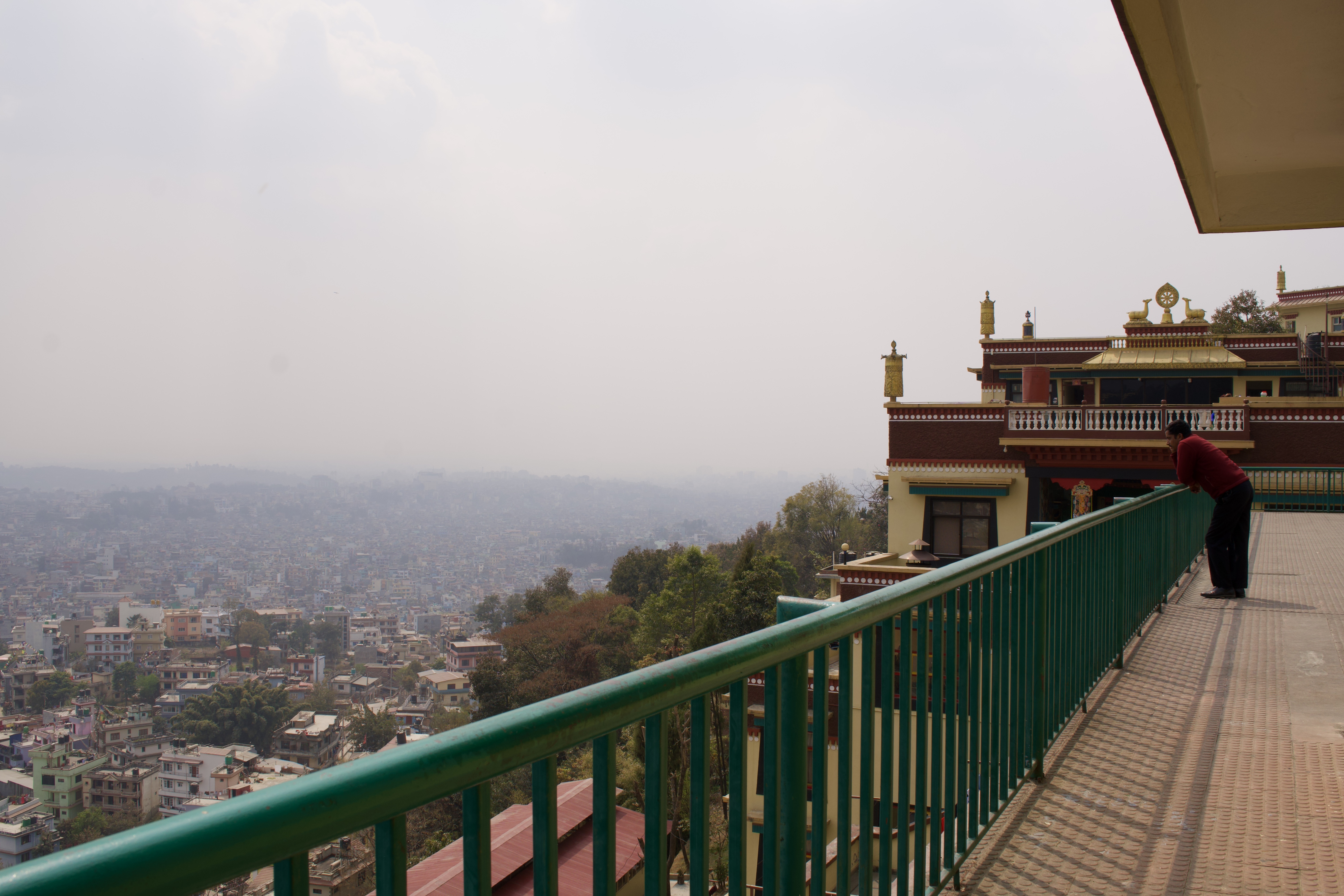
Kopan Monastery is a Tibetan Buddhist monastery built into the hillside overlooking Kathmandu Valley. The monastery is a member of the FMPT – The Foundation for the Preservation of the Mahayana Tradition.
It’s one of the most famous places in the world for Westerners (English speakers) to learn Buddhism, with programs combining Lam Rim teachings and guided meditations. They vary in length from several days to a month-long course in November. My course had 70 attendees.
Kopan is a working monastery with 360 monks, lamas, teachers, and workers. Most are refugees who have fled from Tibet due to Chinese occupation.

After the first evening, I started to get into the flow.
We’d wake up around 6:00 am for morning meditation followed by lectures on Buddhism/Dharma from a Tibetan Buddhist nun. In the afternoon, we’d discuss the lessons in small groups, listen to more lectures, and meditate.
Each evening was a little different. One night we watched Kundun, a different evening we attended a multi-hour ritual prayer ceremony also known as a Puja. Sometimes we would meditate again.
Each day followed this schedule except for the last, when we meditated from 6:45 am to 9:00 pm with breaks for meals.

You’re silent from after dinner until after lunch. Silence means no talking, eye contact, gestures, or anything that may be considered communication.
I found this to be easier than I expected. You learn quickly to keep your head down and your eyes averted. After a few days, I decided to wear the yellow ribbon and go completely silent.
While silent, I noticed every impulse I had to speak. Everything I wanted to say was unimportant or unnecessary, and once I became familiar with the state of being, it felt like a breath of fresh air to not have to interact with others constantly.
I could completely withdraw into myself while still occupying the same space as others, and it wasn’t rude?! Incredible.
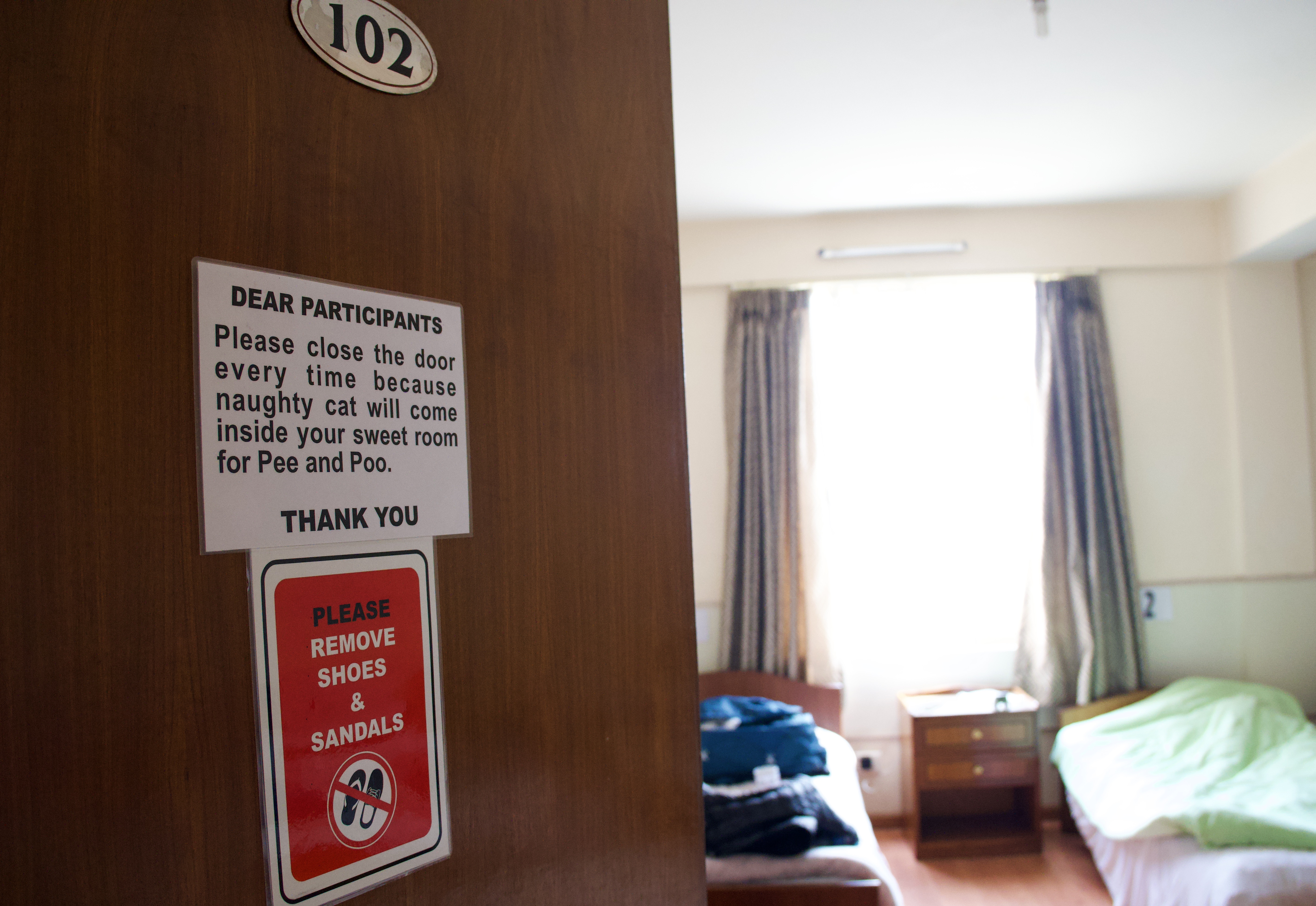
My bed is on the left
You aren’t allowed to take any internet devices or make contact with the outside world. Electronic devices are checked in at reception. I LOVED everything about this.
When I arrived, the monk was shocked that I was so eager to give up my items. “Are you sure?” he asked me multiple times, “you can use for one more hour.”
“Yes, please take it!” I said as I forced my cell phone into his hands.
It’s one thing to make the personal choice to be device-free, but it’s another to be around dozens of other people who are device-free. The entire energy shifts. Everyone is engaged and present.
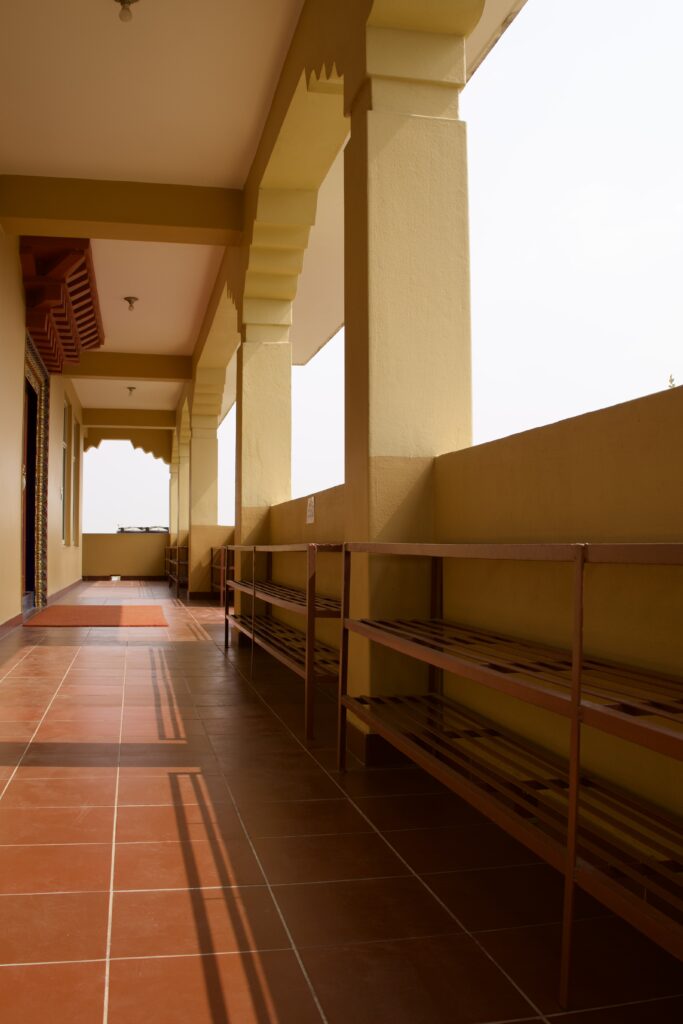
Where we stored our shoes before meditation
You can’t sing, dance, or play music. No yoga or exercise unless in the privacy of your room. No reading anything unrelated to Dharma. No killing—not even an ant! No stealing. No lying. No sexual activity. No drugs or alcohol. And adhere to the dress code (no tight pants, cover shoulders).
In your free time, you’re instructed to walk meditatively through the gardens, talk about the Dharma with other students, read Dharma books, journal, and meditate.
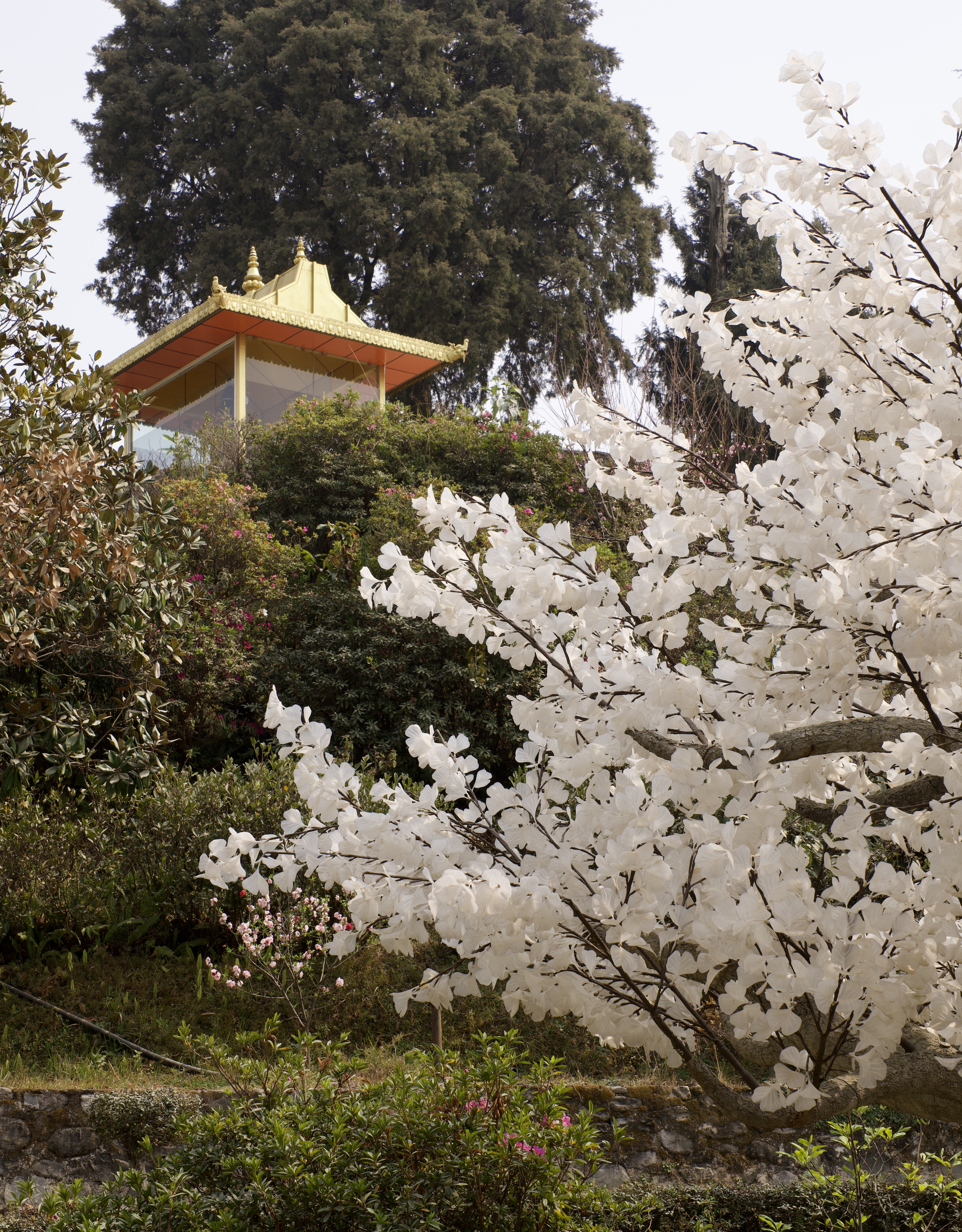

There’s a café, library, and various places to sit and listen to the monks chant their daily prayers in the main temple. Down the road from the monastery is the Kopan Nunnery, which I visited on my way back to Kathmandu (photos below). It’s undergoing new construction.
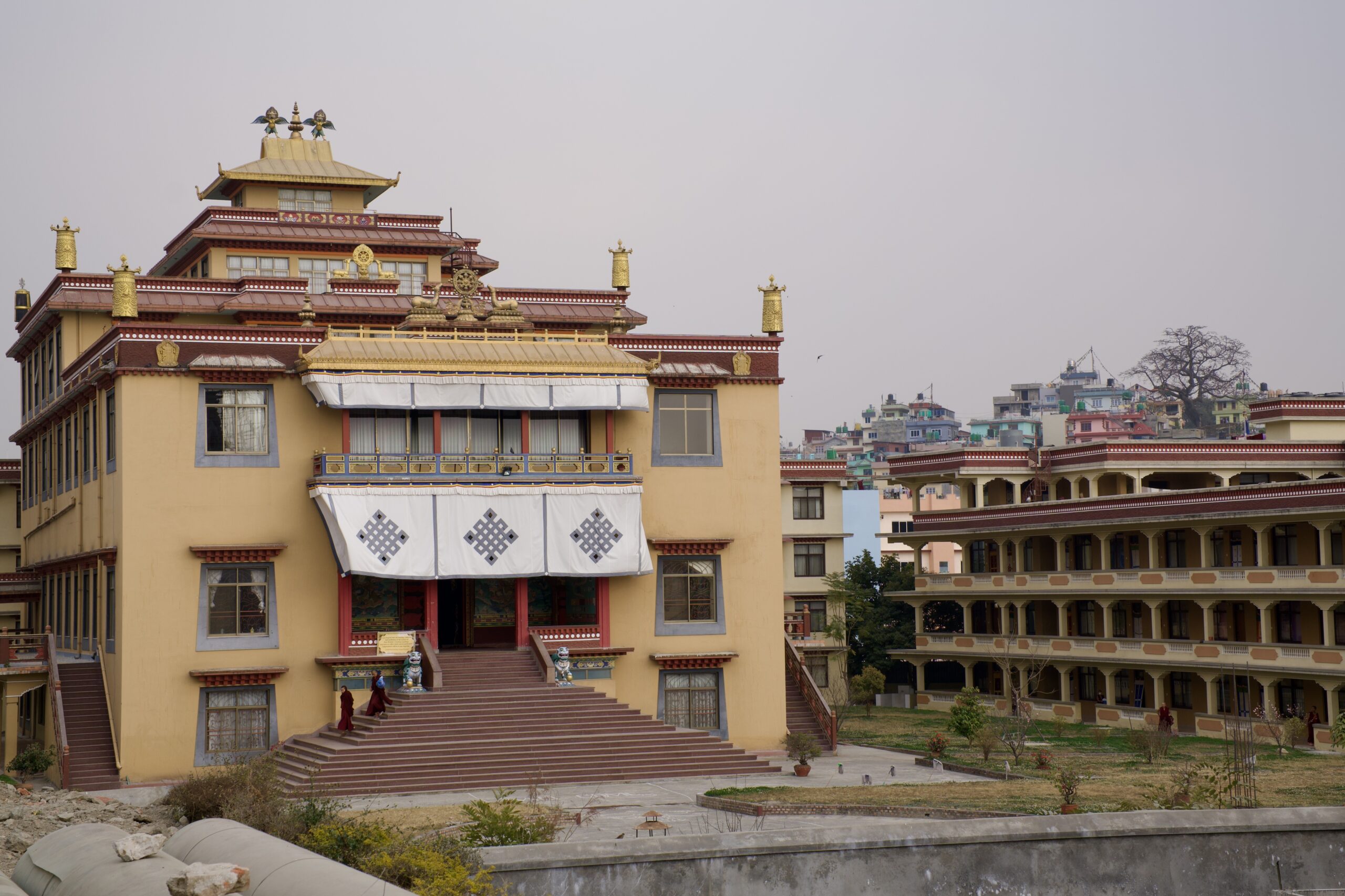
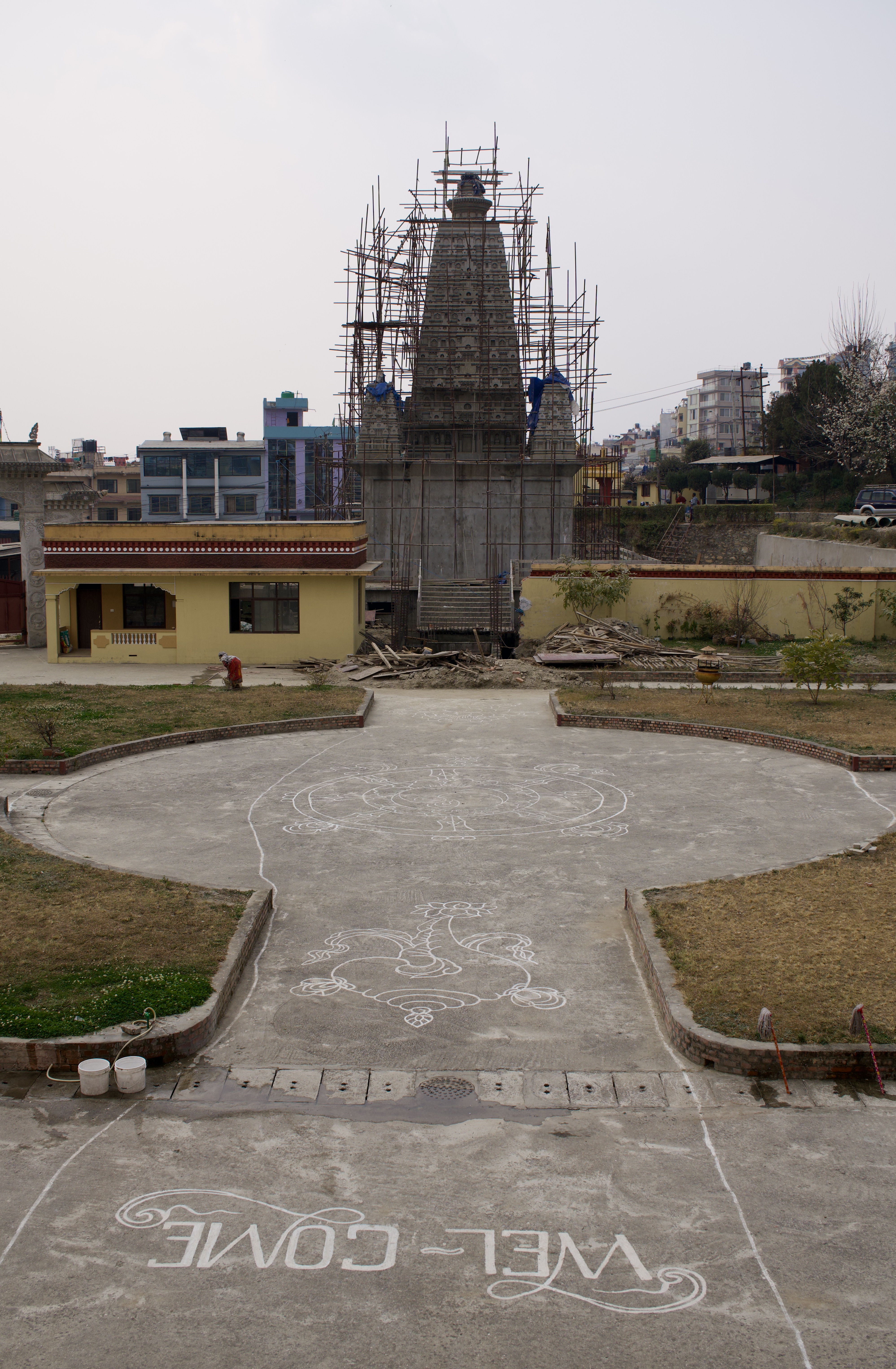

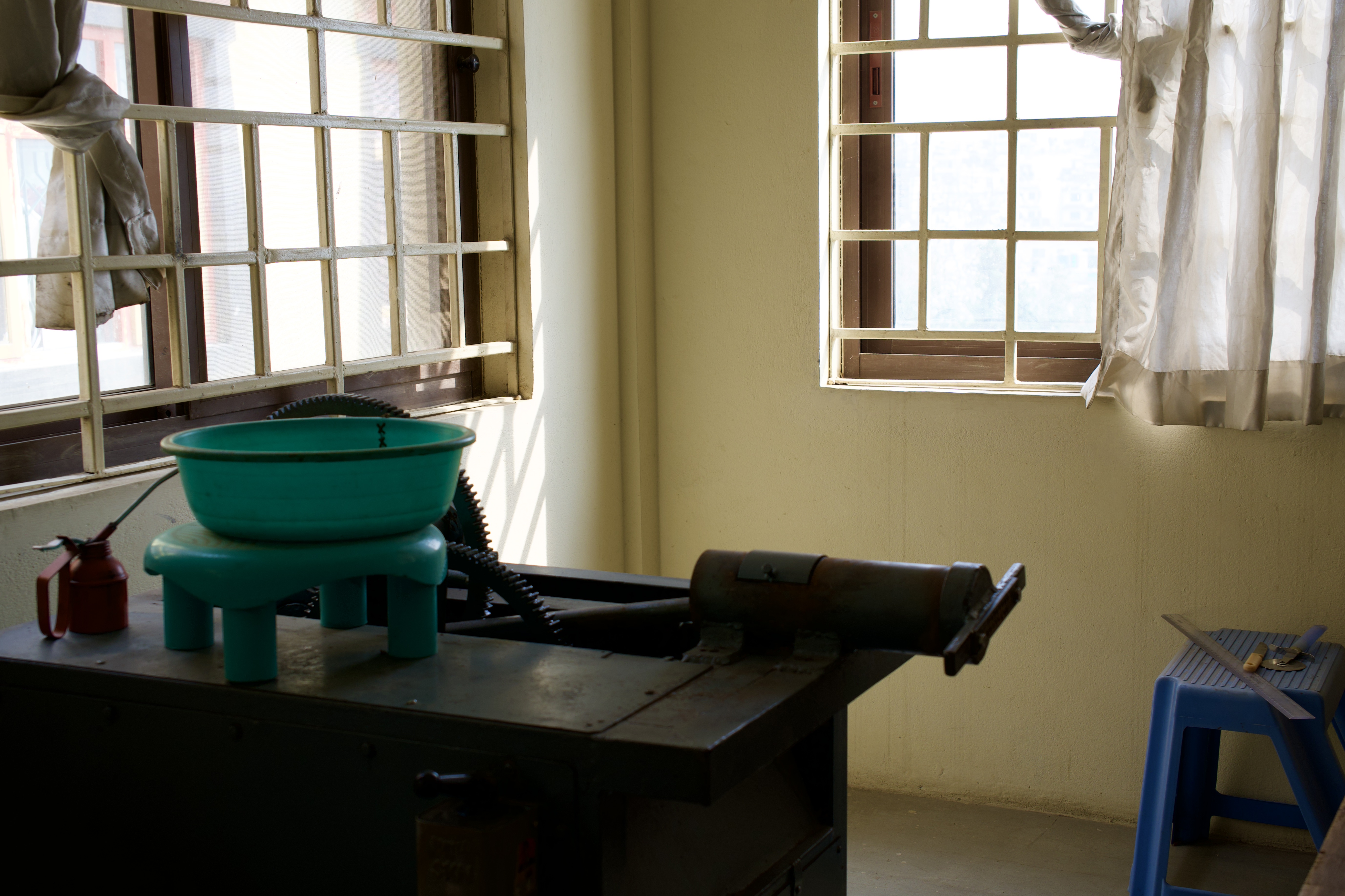
Where the nuns make their incense
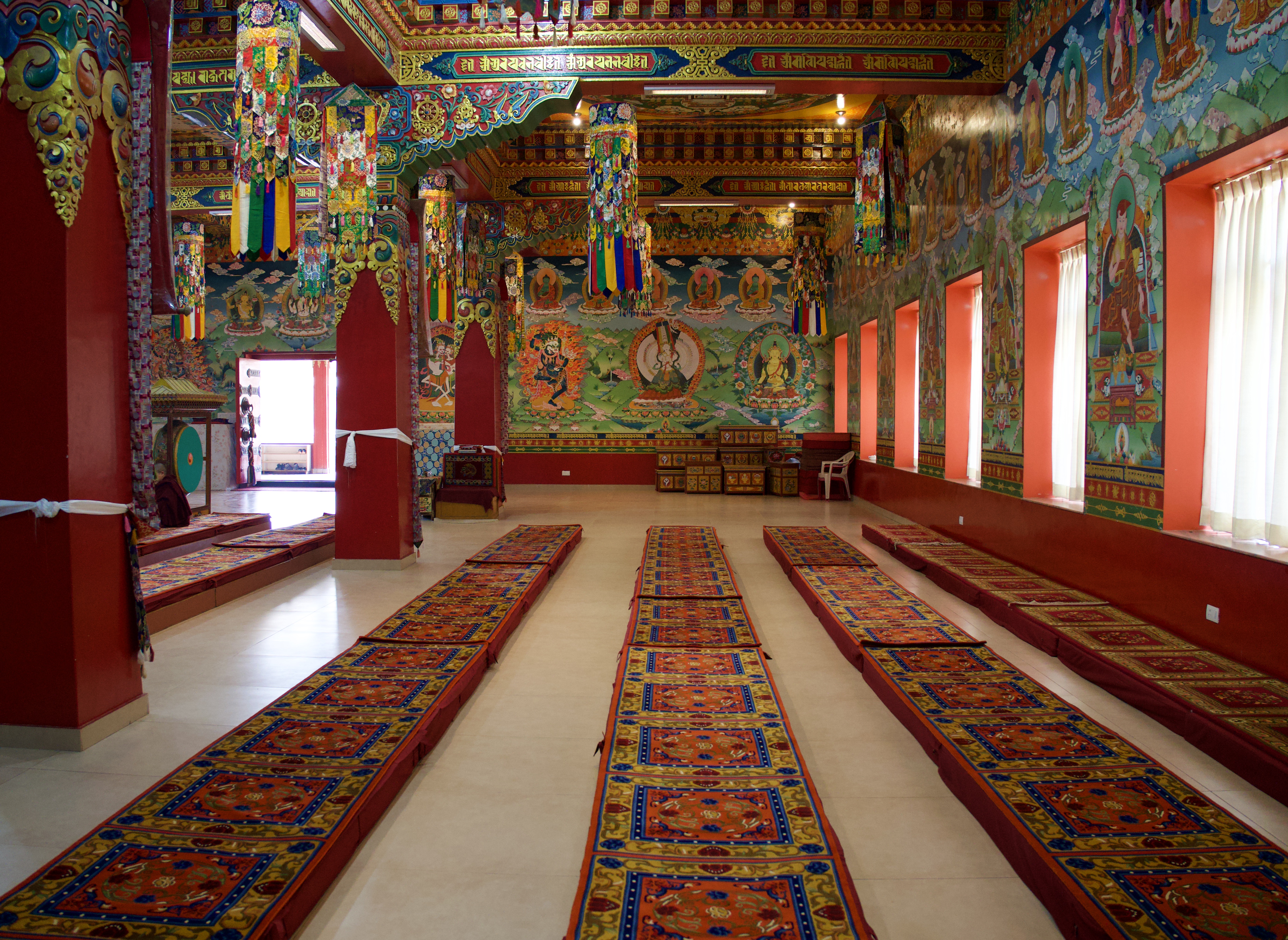


There are very few times in your life when you are in a quiet and nurturing space, disconnected from your “real life,” with food provided for you and teachings available, and the sole obligation of thinking about, “what kind of person do I want to be when I die?”
It’s a good question to ask and one that I can’t stop asking myself.
We meditated on it and many other topics while I was there. From anger to attachment to my life’s journey going back to the womb (“pre-womb,” a friend corrected me), it seemed like every person I’d crossed paths with in my life was meditated on. Yes, even you.
I went from struggling to sit still for more than a few minutes at a time to meditating for 8+ hours in a single day. My brain felt like pudding by the end of it though.
The teachings were insightful. I learned a lot about Buddhism… and while I’m tempted to share what I’ve learned openly on this platform, I don’t think that’s appropriate. For one, I’m not qualified to teach this, and two, we were explicitly told not to do so.
As the nun would say: “Buddhism is for the discovery of the self, not to convert others. Be wary of people who proclaim they’re a Buddhist without properly studying.” (Something I appreciate about the teachings is the emphasis on healthy skepticism and rational reasoning.)
That didn’t stop me from blabbering about it the following weeks to anyone who would listen… Oops!
I can safely say that I’m past that stage of integration and now feel like doing the opposite of sharing. The longer I sit with the experience, the more personal and sacred it feels.
Something I didn’t think about before I arrived was the people that’d be there. Not the monks, but the fellow attendees: psychologists, neuroscientists, landscapers, reiki practitioners, miners, yoga teachers, Buddhists.
Their presence brought long talks about consciousness, reincarnation, the evolution of reality, particle behavior, the conscious visual field, somatic awareness, emptiness and no self, and more. We discussed the parallels, complements, and contradictions of Buddhism to other disciplines such as western psychology, quantum mechanics, and art.
If you know me, you know these types of conversations are my version of heaven—or escape from samsara. 😉
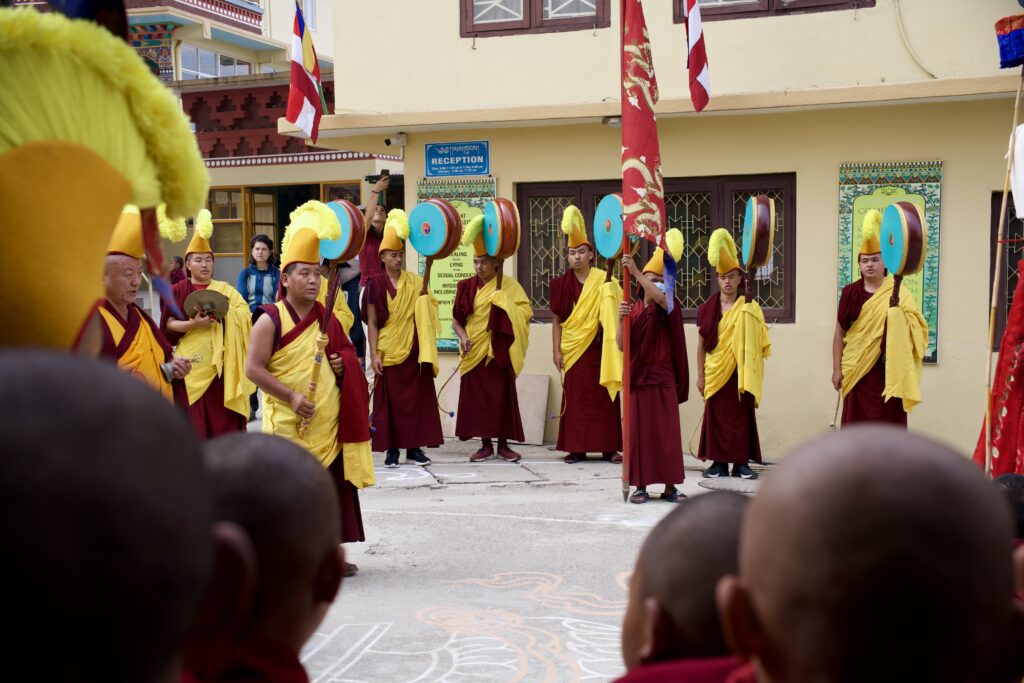

I left Kopan on Losar, the Tibetan new year (see above), and returned to Jessika’s place in Patan.
It’s hard to say what will come of this experience. On the day I took those photos, I felt like my brain had been irreversibly changed. In some ways, it still is, but in others, I’ve felt myself slipping back into old habits.
It’s an interesting question to meditate* on: how do you integrate profound experiences into yourself? I wonder about this often, especially as I continue to do things that challenge and reform my sense of self… Will who I am becoming go away when I return to the environments that made me who I was?
*This has a whole new meaning for me now!
I have a feeling that habits can make a difference.
After Kopan, I took a couple of days off and then started meditating every other day. I’d like to amp up to a daily practice again. As for journaling, it’s something I still do daily. I’d like to keep studying Buddhism and sign up for another meditation retreat in the future.
Reach out to me directly if you have questions or want to talk about the experience.
-R
So, you want to go to Kopan?
- According to the folks I asked who have taken multiple courses there, they are all fairly similar to each other. More important is the duration—a 3-day course will have significantly less depth than a 10-day.
- Don’t forget to bring toilet paper, slip-on shoes, laundry soap, layers, a journal and pens, and Dharma-related reading material. There’s a shop if you forget.
- Bring a mug if you’d like to drink tea throughout the day. Also available at shop.
- The food is vegetarian and delicious, but there’s a café if you want something else.
- Think about how you can make your transition to “reality” easier. I noticed that many people had a negative reaction when they thought about returning to the “real world,” mostly around answering text messages.
I was really excited to hear about this game changing experience! So impressed that you were able to immerse yourself into the lifestyle and come away with so much from it.
I have also thought about how meaningful experiences change who we are. Maybe in time you’ll continue to discover newness in yourself or a developing piece you already had.
In any case, thanks for sharing!! Keep up the great writing. Really enjoying keeping up with your adventures.
I have a friend who loved going there or someplace similar. She has a daily practice of meditation and yoga. I think each person can find their own version of this…taking time to step away from all outside stimulation and just be present in the “now”.
It’s so healing.
Love you!
Just read this one for the first time. Great experience! Even years from now, it will have significance.😘